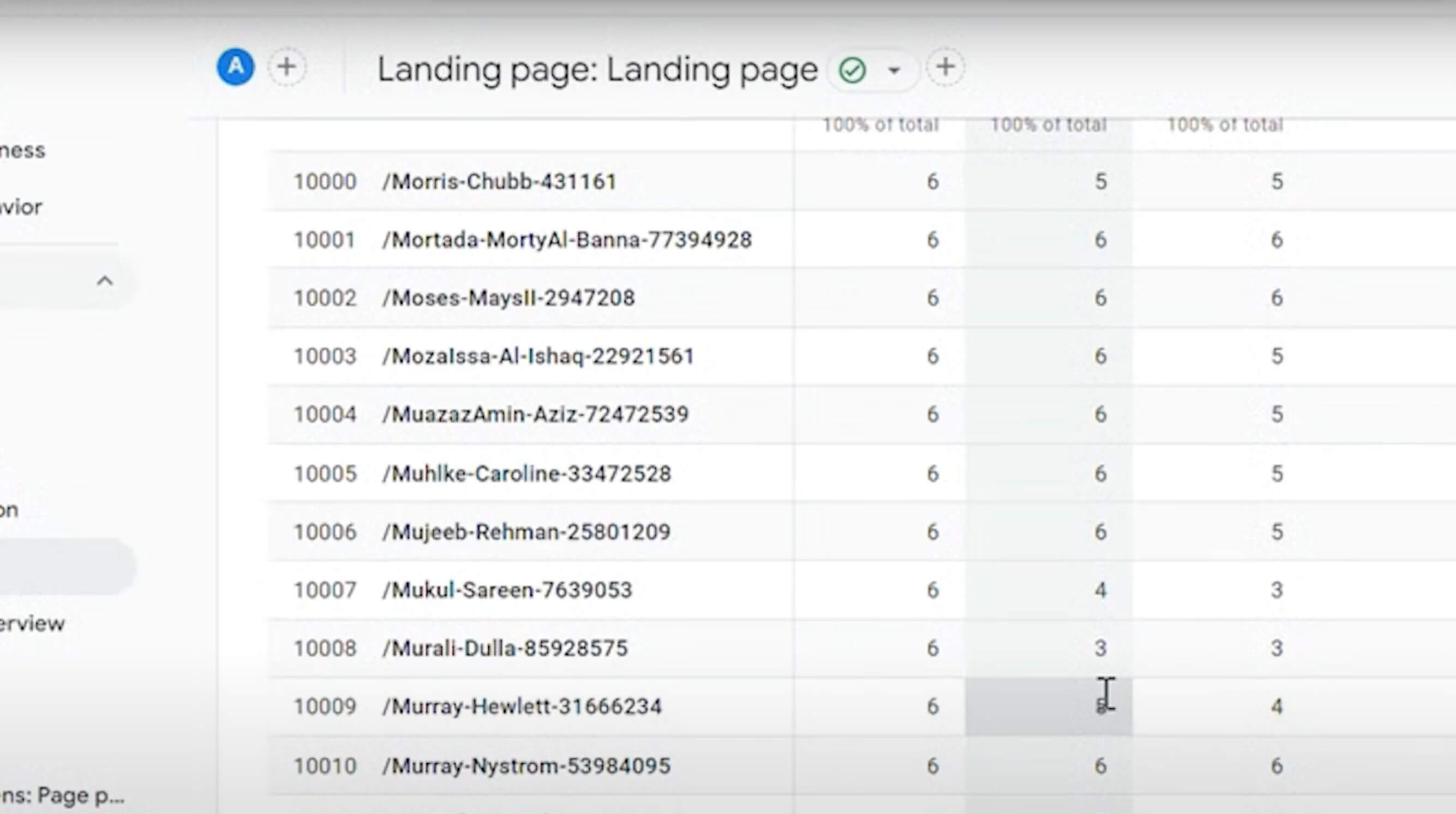Part 35: Monitoring Results
Part 35: Monitoring Results
Finally, there's monitoring results. This is our Google Analytics traffic every month, and we can look at the pages that get traffic from our programmatic SEO pages as well as the pages that don’t get traffic.
For example, we found that maybe 70% or more of the pages that we release don’t actually get any traffic. So after a while, we can consider, 'Hey, do we still want these pages live?'
We can do an export for every page that receives traffic from Google Analytics. We could also look at our server logs, which are more accurate than Analytics. So every page that doesn’t get traffic, we can de-index those pages or redirect them to new pages that we will release that could potentially get more traffic. This is to conserve indexing budget because, as I mentioned, the more pages you have indexed by Google, the harder it is to index more. We just want to make sure we’re only indexing pages that get traffic.

The other thing to monitor, of course, is whether this traffic actually converts. I can tell you that, for example, 'Katy Perry email' does not convert very well to paying customers for a B2B contact-finding tool like ContactOut. So that’s something we could track—like, 'Hey, how many people sign up from this traffic for a particular keyword?' And out of that, how many people actually pay us? From there, we can further refine which keywords have better purchasing intent.

Finally, there's monitoring results. This is our Google Analytics traffic every month, and we can look at the pages that get traffic from our programmatic SEO pages as well as the pages that don’t get traffic.
For example, we found that maybe 70% or more of the pages that we release don’t actually get any traffic. So after a while, we can consider, 'Hey, do we still want these pages live?'
We can do an export for every page that receives traffic from Google Analytics. We could also look at our server logs, which are more accurate than Analytics. So every page that doesn’t get traffic, we can de-index those pages or redirect them to new pages that we will release that could potentially get more traffic. This is to conserve indexing budget because, as I mentioned, the more pages you have indexed by Google, the harder it is to index more. We just want to make sure we’re only indexing pages that get traffic.

The other thing to monitor, of course, is whether this traffic actually converts. I can tell you that, for example, 'Katy Perry email' does not convert very well to paying customers for a B2B contact-finding tool like ContactOut. So that’s something we could track—like, 'Hey, how many people sign up from this traffic for a particular keyword?' And out of that, how many people actually pay us? From there, we can further refine which keywords have better purchasing intent.

